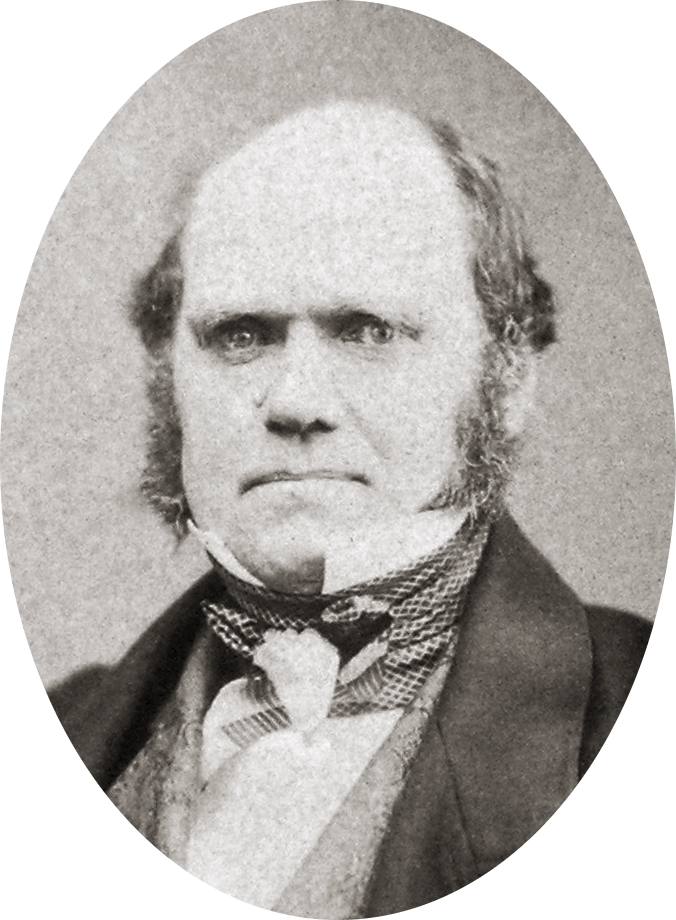
Every year, in the last two weeks of January and the first two weeks of February, I have a busy time of it, reminding people about Darwin Day. As I wrote in 2012 (and repeated here in 2014), “Across the country and around the world, at colleges and universities, schools and libraries, museums and churches, people assemble around February 12 to commemorate the life and work of the British naturalist. But it’s not just about Darwin: it’s about engaging in—and enjoying—public outreach about science, evolution, and the importance of evolution education.” There’s always a marvelous assortment of innovative ways of celebrating the occasion on display, but I was struck by the announcement from the Humanist Society of Redding, California, which mentioned: “This year’s featured entertainment will be a live production of ‘Charles Darwin, Vampire Slayer.’”
How could I resist? I had been to Redding three times before, I think: once for lunch en route to Oregon; once to pay my respects to Sue, the Field Museum’s famous Tyrannosaurus rex, when she was visiting Redding’s Turtle Bay Museum; and once to view a solar eclipse, which I did from the excellent vantage point of the middle of the Sundial Bridge over the Sacramento River. All of these visits were pleasant enough, but none hinted in the slightest of the fact—evident from the announcement—that the folks in Redding are on the cutting edge of historical research. Obviously, “Charles Darwin, Vampire Slayer” was going to be a presentation based on the well-established principle of astrological historical determinism coupled with the latest historical scholarship on the life of Abraham Lincoln.
Let’s start with the latter. As the historian Seth Grahame-Smith documents in his Abraham Lincoln, Vampire Hunter (2010), Lincoln learned as a child that vampires killed his grandfather Abraham Lincoln and, later, his mother Nancy Lincoln (née Hanks). As a young man in New Salem, Illinois, he hunted vampires, with the tragic result that Ann Rutledge, his first love, was murdered by a vampire. Thereafter Lincoln decided to give up on vampire hunting, but he, along with William Seward, was brought back into it on being warned that the vampires who dominated the South planned to start a civil war with the ambition of enslaving the whole country. Lincoln’s efforts to resist the vampire threat drove the rest of his career, from his debates with Stephen Douglas through his 1860 campaign for the presidency to the conduct of the Civil War.
So much is familiar to anyone with even a nodding familiarity with the modern biographical literature on the sixteenth president. But since Lincoln and Darwin share a birthday—February 12, 1809—it seems astrologically inevitable that they share a common loathing of vampires. (If you consider appeal to astrological historical determinism to be too facile, I remind you that astrology was good enough for the South Dakota legislators who endorsed the version of House Concurrent Resolution 1009 in 2010 that asserted that “there are a variety of climatological, meteorological, astrological, thermological, cosmological, and ecological dynamics that can [a]ffect world weather phenomena” [emphasis added]; if astrological dynamics can affect weather, then a fortiori they can affect whether someone is obsessed with slaying vampires.)
Indeed, the record provides evidence for Darwin’s preoccupation with vampires. In the first place, he encountered a vampire on his circumnavigation of the world aboard the Beagle. In his Journal of Researches—popularly known as The Voyage of the Beagle—Darwin mentions a vampire attack in Chile experienced by his party: “We were bivouacking late one evening near Coquimbo, in Chile, when my servant, noticing that one of the horses was very restive, went to see what was the matter, and fancying he could distinguish something, suddenly put his hand on the beast’s withers, and secured the vampire.” No doubt in deference to the finer feelings of his readers, Darwin does not describe what was done with the vampire after it was secured; I don’t see any indication that it was among the specimens that he collected.
I won’t pause here to stress the likelihood that Darwin’s well-known but ill-understood post-Beagle infirmity was due to the long-term effects of a vampire attack (less than lethal presumably on account of the diminutiveness of the attacker: as David P. Clark notes in his Germs, Genes, and Civilization (2010), “Chagas disease is spread by…[t]his inch-long vampire [which] emerges to suck blood from its human victims at night”). Even house-bound as he was, Darwin at least continued to correspond with vampire hunters. In 1861, for example, a vampire-hunting correspondent with a keen interest in anatomy told him, “The Bat is a very remarkable instance as I find its multifid liver is exactly reproduced in the Vampire Phyllostoma Hastatum.” (Hastatum probably welcomed his vivisection, having tired of being called “Phyllis” by all the other vampires.)
Anyhow, when I traveled to Redding in February 2015, I was expecting a presentation along these lines. Although “Charles Darwin, Vampire Slayer” took a somewhat different approach—not mentioning Lincoln at all, for example—I wasn’t disappointed. I’m pleased now to discover that there’s a version of the presentation, authored by W. M. Shockley and performed by the Wycked Fell Radio Theater Players, available on-line. I’m also pleased to announce that I will be returning to Redding in May 2015, to speak to the Humanist Society of Redding on the enigmatic topic “After Kitzmiller—What?” I may take the chance to air my theory that Richard Owen’s antipathy to Darwin was due in part to the fact that the great comparative anatomist was himself a vampire—a claim amply supported by his contemporary movie work!

